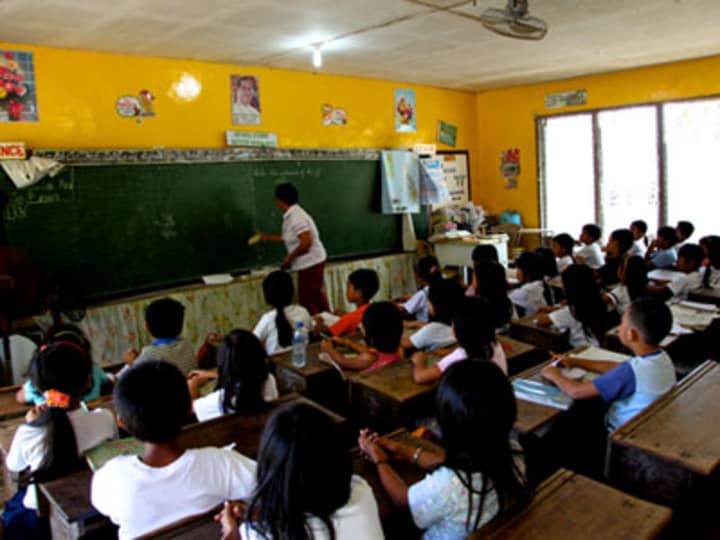
You might have missed it.
Earlier this year, the Asian Development Bank predicted that Asia would be the world’s economic leader in the future, that 3 billion people would enjoy the same standard of living as Europeans, and Asia would hold 51 per cent of the global GDP by 2050.
Of course, the promise was followed by an “if” — if governments invest in education.
The report was a stark warning. Asia’s middle-income countries, the report warned, could get caught in a trap if the workforce does not have the necessary skills and abilities to innovate. For the region’s low-income countries, the reluctance to address unequal access and low education standards is a strong barrier to growth.
In the worst cases, the statistics are grim. Some 16 million children in Asia do not finish primary school. In Cambodia, nearly half of the children fail to reach grade 7, while one-third doesn’t graduate in Bangladesh and Nepal.
In contrast, the region’s most successful nations, such as Singapore, Japan and South Korea, see nearly all children complete their education, at least until secondary school level. Competition is fierce for admission into prestigious schools, where students seek to develop skills that will help them succeed in the global marketplace.
Holistic child development
As an organization that has worked on community education projects in Asia for the 63 years, World Vision has seen many projects succeed and fail.
We know that investing in quality works. We also know that blanket investment in education doesn’t. We witnessed policy-makers who rushed to make Education for All a reality but only focused on primary education and not address education quality.
When we focus on holistic child development, we know that education starts before primary school. It starts with healthy children. If a child does not have essential nutrients in their first five years, they risk being stunted or malnourished, affecting their ability to learn later on in life.
Once in school, poverty can continue to wreak havoc on a child’s ability to learn. When a child is hungry or thirsty, they can’t focus.
We also know that when a child is enrolled in early childhood education, the groundwork is laid for individual development and success later on in school.
Reforms
While NGOs pour millions of dollars to tackle these root causes of education inequality, we need to turn to our government counterparts. Education policy reforms should be reviewed as part of broader policy discussions that enables longterm economic growth.
Inside classrooms, the quality of teaching and the lessons need to be addressed. Teachers should use modern techniques of teaching, focusing on increasing analytical skills and creativity rather than mere memorization. Technology and governance must play a role inside schools as innovation becomes necessary for today’s students.
Beyond primary school, education is at its best when its students have opportunities to explore and understand science, technology, entrepreneurship, research and other areas of knowledge. These opportunities allow children to develop themselves, their future and the future of the communities they live in.
Obviously, this paradigm shift requires resources, as well as investment. Curriculums need to be restructured, teachers need to better equipped. Policies need to change, and better monitoring and evaluation is required. The private sector, families and other stakeholders need to play a role in rebuilding education systems.
Yet, the payoff is undeniable.
International studies clearly show a link between children’s literacy and mathematical skills and average increases in a nation’s annual economic growth. Nations that invest in innovative education time and time again have economies that flourish.
Education brings development
At a family level, countries that prioritize education see better child health, a more sustained ability to deal with economic upheaval and more environmentally friendly practices.
The proof is in places like South Korea, which in 40 years moved from a country in economic despair to a developed nation on the forefront of technological achievement. The government made education a priority and increased investment, resulting in better quality, better outcomes for students and an improved overall economy.
For a long time, NGOs and civil society stepped in to fill the gap. By our own admission, in our aim to help children succeed, we’ve also missed others. We do not have the resources or ability to effect the same widespread change that needs to occur in places like Cambodia, India or Myanmar. No child should leave school without the necessary skills to thrive in the future.
It’s our hope that many governments in Asia will have the ability to see the big picture and invest in innovative education systems, as the future increasingly requires that people be more creative and innovative.
Today’s generation needs to have the skills and abilities to help them adapt to the changing world. This is the world we imagine for children across Asia but for this to happen, we need to change education now.
Join the Devex communityand gain access to more in-depth analysis, breaking news and business advice — and a host of other services — on international development, humanitarian aid and global health.




